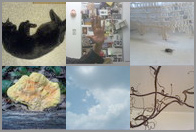The concept of “Web 2.0” has been touted as the “solution” to any number of non-profit management issues. Though the term has been used to mean a wide range of things, in general, it’s the idea that the Web is no longer about one-way information flow, but a dynamic portal where users contribute, comment on, revise and maintain data contained on Web sites. Think of the difference between the Encyclopedia Britannica Online (first generation Web site) and Wikipedia (Web 2.0).
TechSoup, through its NetSquared project, is categorizing the tools most commonly associated with Web 2.0 (blogs, RSS feeds, wikis) as the “social web” because of their ability to affect social change. Although I wasn’t able to attend, I heard wonderful things about the conference they held in May -- we had a MAM grad student who came back revitalized and excited by the possibilities for of Web 2.0 for the arts sector.
As John Falk and Beverly Sheppard point out in their excellent new book, Thriving in the Knowledge Age, the dawning of the “Knowledge Age” has resulted in increased public interest in museums and other cultural institutions. The book points to the new challenge for cultural institutions: can we adapt to this new landscape and become “bottom-up” entities?
The Web is a good place to start.
How do we “customize” arts experiences so that users feel the same kind of buy-in as they do with their other leisure activities? NFL.com has a “My Team” section on its front page that I can customize, when I browse over to Fandango.com I see “Cary’s Favorites” on the right side of the screen, and Amazon has been giving me recommendations for years.
How do we reach the people who truly care about our missions? Google has based its business model on only advertising to people who have indicated interest in a product or topic while MySpace links bands with their fans in a very personal way.
Blogging allows us to communicate frequently and informally with our constituents; creating an “Audience Reviews” section on our Web site allows our visitors to have a voice; hosting discussion forums lets us tap into what’s top of mind for our members.
What works for one organization may not work for another – we all have different audiences who will each have a unique response to an initiative.
One final word… It’s important to carefully consider the time commitments involved in starting any Web 2.0 initiative. Planning new online initiatives should be done just as strategically as for “bricks and mortar” programs.
We’d love to hear about how your organization feels about Web 2.0… Please comment.





